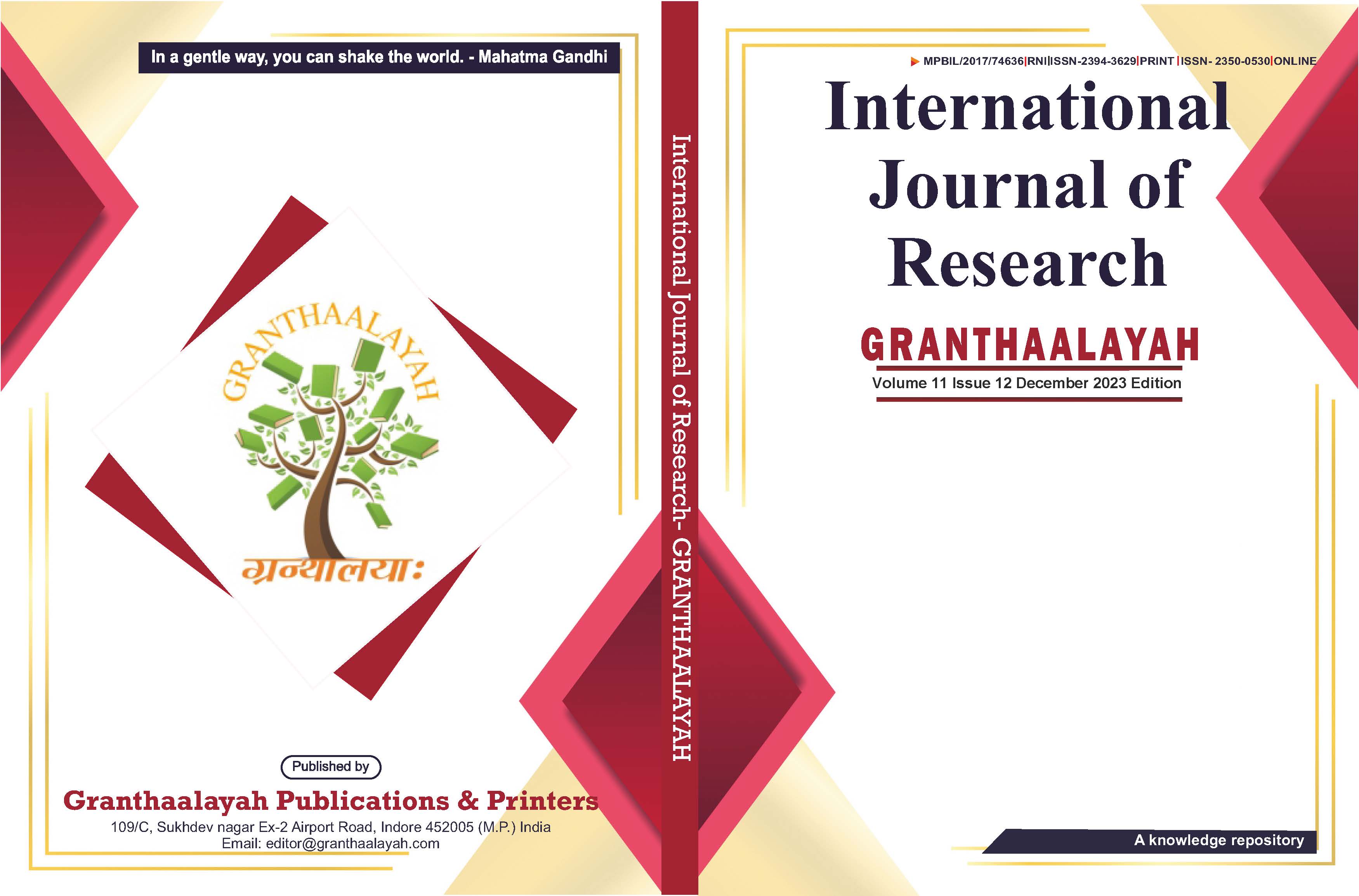A SECURE FILE ENCRYPTION AND DECRYPTION SYSTEM USING AES FOR TEXT AND IMAGES
DOI:
https://doi.org/10.29121/granthaalayah.v11.i12.2023.6125Keywords:
Encryption, Decryption, Aes, Text, ImagesAbstract [English]
In today’s digital era, where vast amounts of sensitive data are transmitted over the internet, securing this information from unauthorized access has become a major concern. The rise of cyber threats and data theft calls for robust protection mechanisms, among which encryption stands out as a fundamental solution. This project focuses on developing a secure file encryption and decryption system using the Advanced Encryption Standard (AES) algorithm for both text and image data.
AES is a symmetric encryption technique known for its speed, efficiency, and strong security. It outperforms older algorithms like DES and RSA in both performance and reliability. The system proposed in this project employs AES to encrypt and decrypt both text and image files, ensuring confidentiality and integrity during transmission. Encryption converts plaintext into unreadable ciphertext using a secret key, while decryption reverses the process with the same key, making it accessible only to authorized users.
The system is implemented in Java and features a user-friendly interface for securely encrypting data. It incorporates a mechanism where a random image is used in the encryption phase and the original image is restored during decryption. This approach adds an extra layer of complexity and security, making brute-force or unauthorized deciphering extremely difficult.
Furthermore, the project discusses the challenges in image encryption, including data redundancy and pixel correlation, and how AES effectively overcomes these. It also highlights the suitability of AES for multimedia data and emphasizes the reliability of sharing encrypted data, particularly images, over unsecured networks. By integrating AES with image handling and applying a systematic encryption-decryption framework, the proposed system provides an effective solution for secure communication in modern digital environments.
Downloads
References
NIST. (2001). Advanced Encryption Standard (AES). Federal Information Processing Standards Publication 197. National Institute of Standards and Technology.
Stallings, W. (2017). Cryptography and Network Security: Principles and Practice (7th ed.). Pearson Education.
Biryukov, A., & Shamir, A. (2003). Cryptanalysis of the Advanced Encryption Standard. Proceedings of the International Workshop on Selected Areas in Cryptography, 1-14.
Whitfield, D., & Sushil, S. (2020). Cryptography and Information Security: Introduction to Modern Cryptography. Springer International Publishing.
Schneier, B. (2015). Secrets and Lies: Digital Security in a Networked World. Wiley. DOI: https://doi.org/10.1002/9781119183631
Perrig, A., Canetti, R., Tygar, J. D., & Song, D. (2000). The TESLA Broadcast Authentication Protocol. RSA CryptoBytes, 3(2), 2-6.
Preneel, B., & Govaerts, R. (1993). A Family of Cryptographic Hash Functions. International Conference on Theory and Application of Cryptographic Techniques, 71-82.
Kessler, G. C. (2013). An Overview of Cryptography. Retrieved from https://www.garykessler.net/library/crypto.html.
Yang, H., & Chen, K. (2016). Enhancing Data Security with Cryptographic Algorithms. International Journal of Computer Science and Information Security, 14(9), 256-263.
RSA Laboratories. (2019). RSA Encryption and Decryption. Retrieved from https://www.rsa.com.
Published
How to Cite
Issue
Section
License
Copyright (c) 2023 Pranav Banga, Nirottam, Shubham Kumar singh, Shubham, Priyanka Singh

This work is licensed under a Creative Commons Attribution 4.0 International License.
With the licence CC-BY, authors retain the copyright, allowing anyone to download, reuse, re-print, modify, distribute, and/or copy their contribution. The work must be properly attributed to its author.
It is not necessary to ask for further permission from the author or journal board.
This journal provides immediate open access to its content on the principle that making research freely available to the public supports a greater global exchange of knowledge.






























